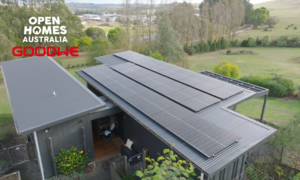A recent report by the Energy Networks Association says embedded generation (EG) technologies such as smaller wind energy and solar power systems can significantly increase their share in Australia’s energy mix in the near term and that will decrease the need for additional centralised generation; and in turn, reduce greenhouse gas emissions.
The 196 page study, entitled “Impacts and Benefits of Embedded Generation in Australian Electricity Distribution Networks”, suggests embedded generation (sometimes referred to by other parties as distributed generation), has a role in helping in the transition from the coal-centric system while large-scale renewable and near-zero emission carbon capture and storage technologies are either still too expensive or are yet to be proven in real-world conditions.
Based on the assumption that a carbon price will be introduced, National Electricity Market modelling finds embedded generation will have “a significant impact on the average spot price of electricity, lowering the delivered energy cost throughout the NEM.”
Increased incidence of embedded generation is also expected to provide benefits to distribution networks; reducing network losses (also known as line loss), improving voltage profiles and postponing the need for network upgrades.
However, not all EG technologies are created equal when it comes to their green street-cred. The report says embedded generation can vary vastly from 1kW domestic arrays of solar panels to wind farms or even diesel generators rated up to 30MW, the threshold for registration with the National Electricity Market.
The ENA also warns planning, design, operation and maintenance approaches and practices will need to change to manage significant growth in numbers and collective output of clusters of these systems.
The Energy Networks Association is a national body representing gas and electricity distribution businesses throughout Australia.
Energy Network Association’s full report can be viewed here (PDF).












































